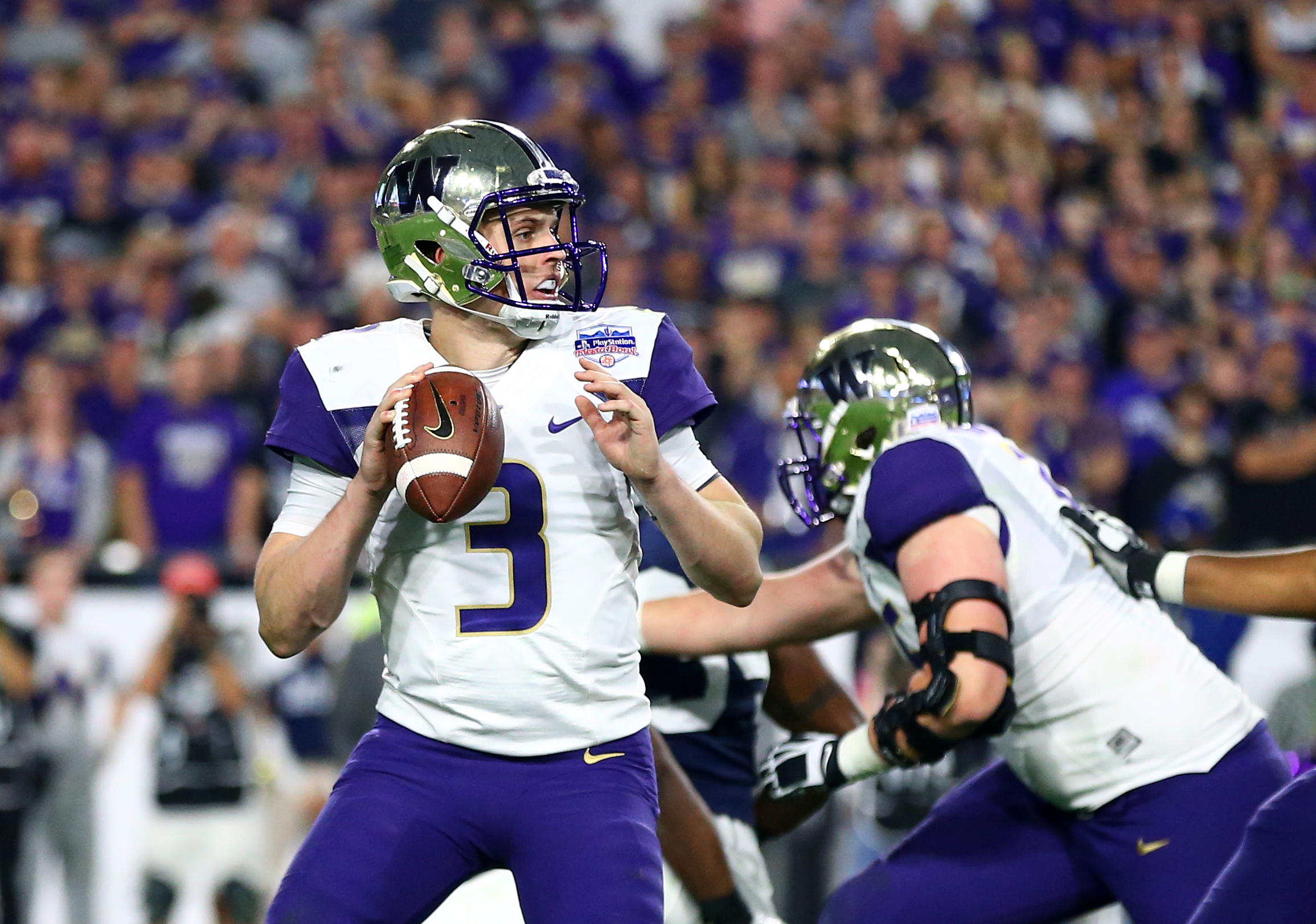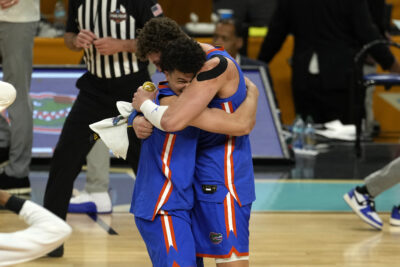
Why Washington is the Pac-12’s only Playoff threat to the SEC
By Jim Tomlin
Published:
The Pac-12 has spent the past decade living at the periphery of the national championship conversation.
Since the mid-aughts USC dynasty ended at Vince Young’s feet in the Rose Bowl on Jan. 4, 2006, teams calling themselves the best of the West have not had much luck against the rest of the nation.
Only twice has a Pac-12 representative made the national championship game in the past 12 seasons. Oregon made it twice and lost both times, once near the end of the BCS era (to Auburn) and in the inaugural College Football Playoff title game (to Ohio State).

Of course nobody won any national championships from 2006-12 unless they were in the SEC. And after a two-year “drought” for the league in 2013-14, Alabama has won two of the past three titles. Since 2006, the ACC is 2-1 in title games, the Big Ten is 1-2 and the Big 12, like the Pac-12, is 0-2.
So what will it take for a Pac-12 team to leap back into the CFP race? Perhaps a team which has a big nonconference tilt right off the bat, providing a chance to impress CFP committee members. A team which avoids Pac-12 South favorite USC on the schedule. One with a ton of talent returning from a team which went 10-3 last season. One under a young coaching star.
A team like the Washington Huskies.
Why can Washington break through the glass ceiling and get the Pac-12 back in the playoffs, like the Huskies team that went to the CFP semifinals in the 2016 season?
For starters, look at this team’s starters. UW is 22nd in the FBS in returning production and ninth among Power 5 conference teams (10th if you include Notre Dame). And two of the teams ahead in that chart are Kansas and Baylor, who were both terrible in 2017. How much do you want all those starters returning after those debacles?

The Huskies bring back three-year quarterback starter Jake Browning and 1,380-yard rusher Myles Gaskin. They bring back four starters on the offense line. Four of the starting defensive front seven return.
Perhaps best of all, and maybe the top reason to believe in this team, is that all four starters return to form perhaps the nation’s best secondary — including cornerback Byron Murphy and safety Taylor Rapp, both first-team Athlon’s preseason All-Americans.
Last season Washington was decent at running (ranked 44th in FBS with little happening behind Gaskin) and a bit below average at passing (72nd) as a bunch of injuries to receivers led to a decline in Browning’s numbers. The senior passed for 43 touchdowns in 2016 but just 19 last year — yet, tellingly, his completion percentage rose from 62.1 to 68.5, indicating a quarterback who is maturing.
Among coaches with at least one full season at Washington, Chris Petersen’s .685 winning percentage ranks third all-time behind Enoch Bagshaw (.736 in nine seasons) and Don James (.712 in 18 seasons).
There are questions at receiver and linebacker entering 2018. But head coach Chris Petersen, 53, has worked wonders in Seattle in just four seasons. A program which had no winning seasons from 2003-09, then seemed content to go 7-6 every year under Steve Sarkisian, has piled up 37 victories since 2014 including 22 in the past two seasons. Petersen has gotten this program to a point where last season’s three losses — by a combined 21 points — felt like a letdown.
So where does this season’s Washington team stack up? We will all know a lot after the opener, a mouth-watering matchup against defending SEC West Division champion Auburn in Atlanta. Win that, and the Huskies will stake a claim to being a top-5 team. Even if they lose, the Huskies are the favorite to win the Pac-12, perhaps even run through the league undefeated.
If that happens, a 12-1 team whose only loss was to Auburn in Week 1 will be difficult to keep out of the College Football Playoff.
The Huskies have the talent to make the CFP committee’s job interesting, at least.
RELATED: ACC’s biggest Playoff threat to SEC | Big 12’s biggest Playoff threat to SEC | Big Ten’s biggest Playoff threat to SEC
Longtime newspaper veteran Jim Tomlin is a copy editor and writer with SaturdayDownSouth.com.





